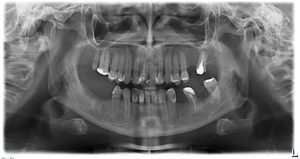Just as assets are categorized as current or noncurrent, liabilities are categorized as current liabilities or noncurrent liabilities. Typically, a balance sheet will be prepared and distributed on a quarterly or monthly basis, depending on the frequency of reporting as determined by law or company policy. At the end of an accounting period, a company will close out the period. After all closing entries are made, the company will be ready to run its financial reports for that accounting period. Closing a period may take days, weeks, or even months into the next accounting period, and two periods can run simultaneously as the previous period is closed out. Noncurrent liabilities are obligations that will take more than the next 12 months to be repaid.
The accounting period is useful in investing because potential shareholders analyze a company’s performance through its financial statements, which are based on a fixed accounting period. The balance sheet date is a date as of which the information in a statement of financial position is stated. Any debt that is going to be paid off within twelve months is considered current.
There are two main accounting rules that govern the use of accounting periods, the revenue recognition principle and the matching principle. The accrual method of accounting encompasses these two principles. A calendar year with respect to accounting periods indicates that an entity begins aggregating accounting records on the first day of January and subsequently stops the accumulation of data on the last day of December. This annual accounting period imitates a basic 12-month calendar period. After transactions are recorded and adjusted for in the general journal, they are transferred to appropriate sub-ledger accounts, such as sales, purchase, accounts receivable, inventory, and cash.
As noted above, you can find information about assets, liabilities, and shareholder equity on a company’s balance sheet. The assets should always equal the liabilities and shareholder equity. This means that the balance sheet should always balance, hence the name. If they don’t balance, there may be some problems, including incorrect or misplaced how to calculate inventory purchases data, inventory or exchange rate errors, or miscalculations. These ratios are good quick measurements of your business’s performance in certain critical areas, but they don’t tell the whole story. To make the best decisions for your business, you should review the balance sheet alongside the profit and loss statement and statement of cash flows.
What Is A Balance Sheet? (Example Included)
It’s important to keep accurate balance sheets regularly for this reason. Historically, balance sheet substantiation has been a wholly manual process, driven by spreadsheets, email and manual monitoring and reporting. In recent years software solutions have been developed to bring a level of process automation, standardization and enhanced control to the balance sheet substantiation or account certification process. Of the four basic financial statements, the balance sheet is the only statement which applies to a single point in time of a business’s calendar year. If a company or organization is privately held by a single owner, then shareholders’ equity will generally be pretty straightforward.
- If your business is new and simple, you can create a manual balance sheet using the accounting formula.
- In fact, an unbalanced balance sheet usually indicates a technical problem inside the software.
- When analyzed over time or comparatively against competing companies, managers can better understand ways to improve the financial health of a company.
- If you had to pick the most important part of the report, look at Cash and Debts.
- Her work has been featured by Gartner and Careers360, among other publications.
- If you list a building in your Fixed Assets that you bought 10 years ago, it will always stay on the Balance Sheet for what you paid for it (called Historical Cost).
If not, I won’t call you out, but I hope when you finish reading this, you’ll understand why you need to fix that problem. She’s a quiet character, but when things go badly, she will make itself heard. So listen intently without comment until the Balance Sheet has said what she needs to say.
A net worth figure at the bottom, like the net worth figure on a company balance sheet, equals total assets minus total liabilities. This financial statement lists everything a company owns and all of its debt. A company will be able to quickly assess whether it has borrowed too much money, whether the assets it owns are not liquid enough, or whether it has enough cash on hand to meet current demands. Balance sheets give an at-a-glance view of the assets and liabilities of the company and how they relate to one another.
This is a valuable information to a financial institution who wants to determine whether a company qualifies for additional credit or loans. Others who would be interested in the balance sheet include current investors, potential investors, company management, suppliers, some customers, competitors, government agencies, and labor unions. Accounts receivables (AR) consist of the short-term obligations owed to the company by its clients. Companies often sell products or services to customers on credit; these obligations are held in the current assets account until they are paid off by the clients. In broad terms, owner’s equity is essentially what would be left for owners from company assets after paying off all liabilities. You can create balance sheets manually via spreadsheets or with accounting software.
Determine the Reporting Date and Period
The following balance sheet is a very brief example prepared in accordance with IFRS. It does not show all possible kinds of assets, liabilities and equity, but it shows the most usual ones. Because it shows goodwill, it could be a consolidated balance sheet. Monetary values are not shown, summary (subtotal) rows are missing as well. If you’ve found that your balance sheet doesn’t balance, there’s likely a problem with some of the accounting data you’ve relied on.
Balance Sheet Example
If it’s publicly held, this calculation may become more complicated depending on the various types of stock issued. Shareholders’ equity refers generally to the net worth of a company, and reflects the amount of money that would be left over if all assets were sold and liabilities paid. Shareholders’ equity belongs to the shareholders, whether they be private or public owners. Retained Earnings is merely the total of all net income (or loss) over the life of the company.
How an Accounting Period Works
A general journal is the first place where daily business transactions are recorded by date. Depending upon the practice followed in an organization, some may keep specialized journals such as a sales journal, cash receipts journal, and purchase journal to record specific types of transactions. Because this is important only to investors or lenders, you want to be careful to include this only when necessary. For a small business looking for a small amount of funding, you may be able to draft something with your accountant verifying your net worth and/or previous year’s income.
An income statement is prepared before a balance sheet to calculate net income, which is the key to completing a balance sheet. Net income is the final amount mentioned in the bottom line of the income statement, showing the profit or loss to your business. Net income is added to the retained earnings accounts (income left after paying dividends to shareholders) listed under the equity section of the balance sheet. One is similar to a company balance sheet and lists your liabilities and assets.
If you think of your financial statements as the story of your business, then the balance sheet serves as the CliffsNotes version of that story. Every transaction in your business impacts the balance sheet in some way. The information found in a company’s balance sheet is among some of the most important for a business leader, regulator, or potential investor to understand.
The second is earnings that the company generates over time and retains. Because companies invest in assets to fulfill their mission, you must develop an intuitive understanding of what they are. Without this knowledge, it can be challenging to understand the balance sheet and other financial documents that speak to a company’s health. If a balance sheet doesn’t balance, it’s likely the document was prepared incorrectly. An important accounting rule used in the accrual method of accounting is the revenue recognition principle.
agree to the Terms and Conditions.
The common stock and preferred stock accounts are calculated by multiplying the par value by the number of shares issued. The balance sheet excludes detailed information about the business’s income and expenses. Instead, this detail is included in the business’s profit and loss statement. Explore our online finance and accounting courses, which can teach you the key financial concepts you need to understand business performance and potential. External auditors, on the other hand, might use a balance sheet to ensure a company is complying with any reporting laws it’s subject to. No, an accounting period can be any established period of time in which a company wishes to analyze its performance.










